The Captivating Clay Plaque
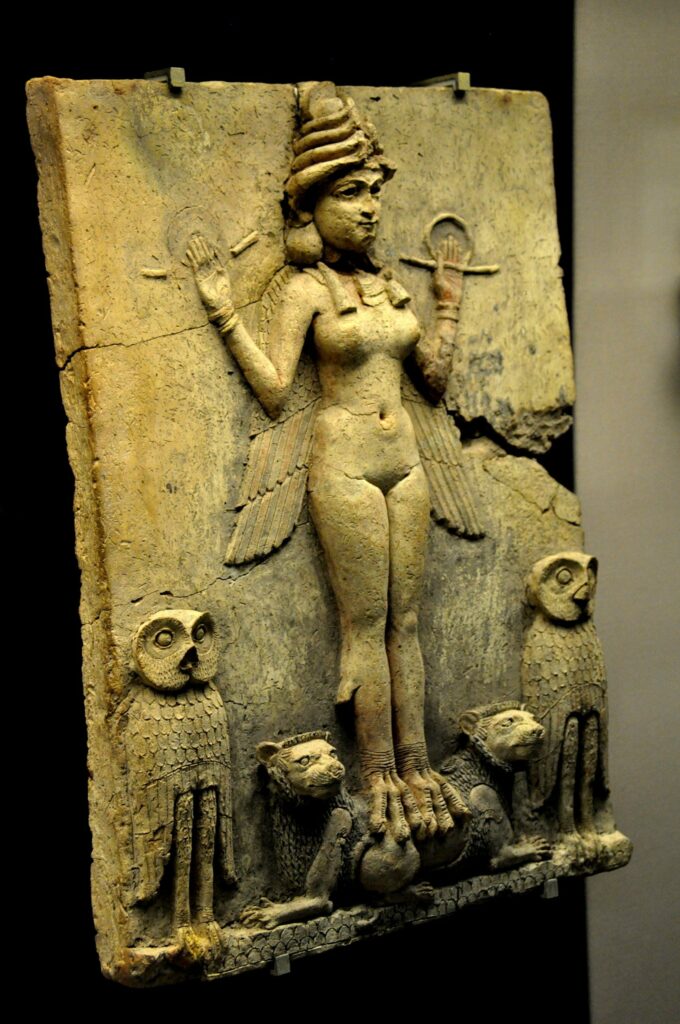
In the heart of ancient Mesopotamia, a remarkable clay plaque dating back to around 1750 B.C.E. has captured the imagination of scholars and enthusiasts alike. This masterpiece of Old Babylonian art depicts a figure known as the “Queen of the Night,” a mysterious deity whose true identity remains a subject of debate to this day.
A Divine Beauty in Clay
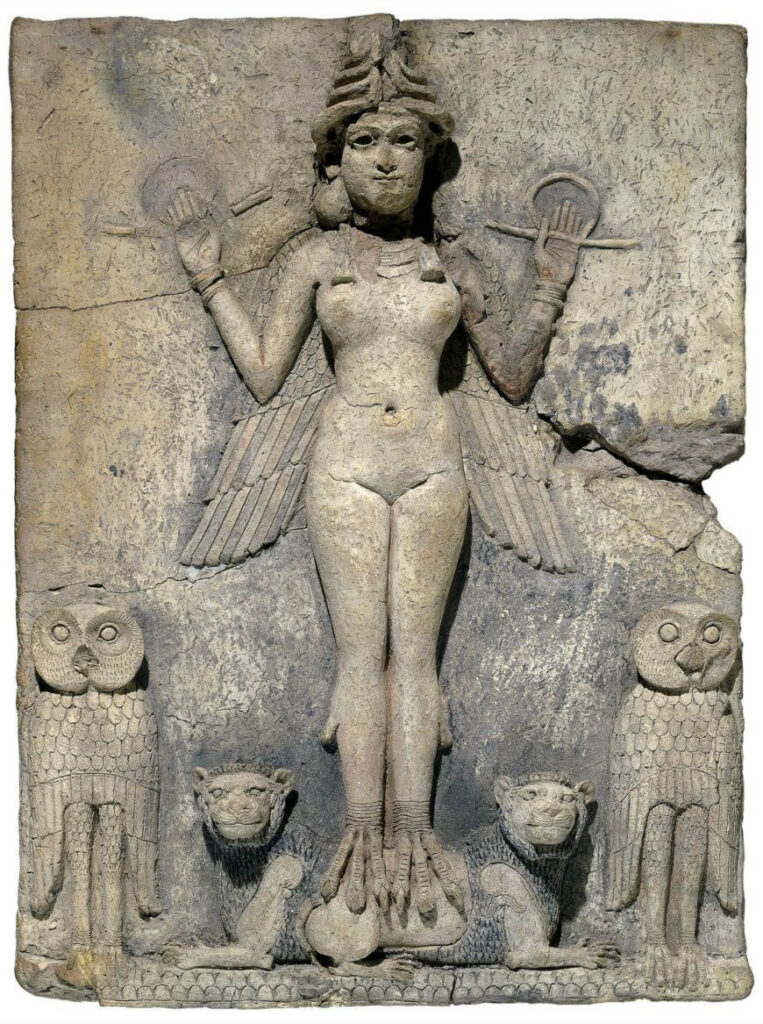
The plaque showcases a curvaceous, naked woman adorned with the horned headdress of Mesopotamian gods. She stands atop two lions, flanked by owls, with wings and talons that hint at her connection to the underworld. The intricate details and symbolism of this artwork offer a fascinating glimpse into the rich tapestry of Mesopotamian mythology.
Theories and Interpretations
Ishtar: Goddess of Love and War

Many scholars believe the figure represents Ishtar, the powerful goddess of love, fertility, and war. The plaque’s depiction of a nude, curvaceous form holding symbols of justice aligns with Ishtar’s known iconography, while the presence of lions further supports this interpretation.
Ereshkigal: Queen of the Underworld
Another theory suggests the figure may be Ereshkigal, Ishtar’s sister and ruler of the underworld. The plaque’s dark background and the presence of owls, often associated with the realm of the dead, lend credence to this interpretation.
Lilitu: The Night Demoness
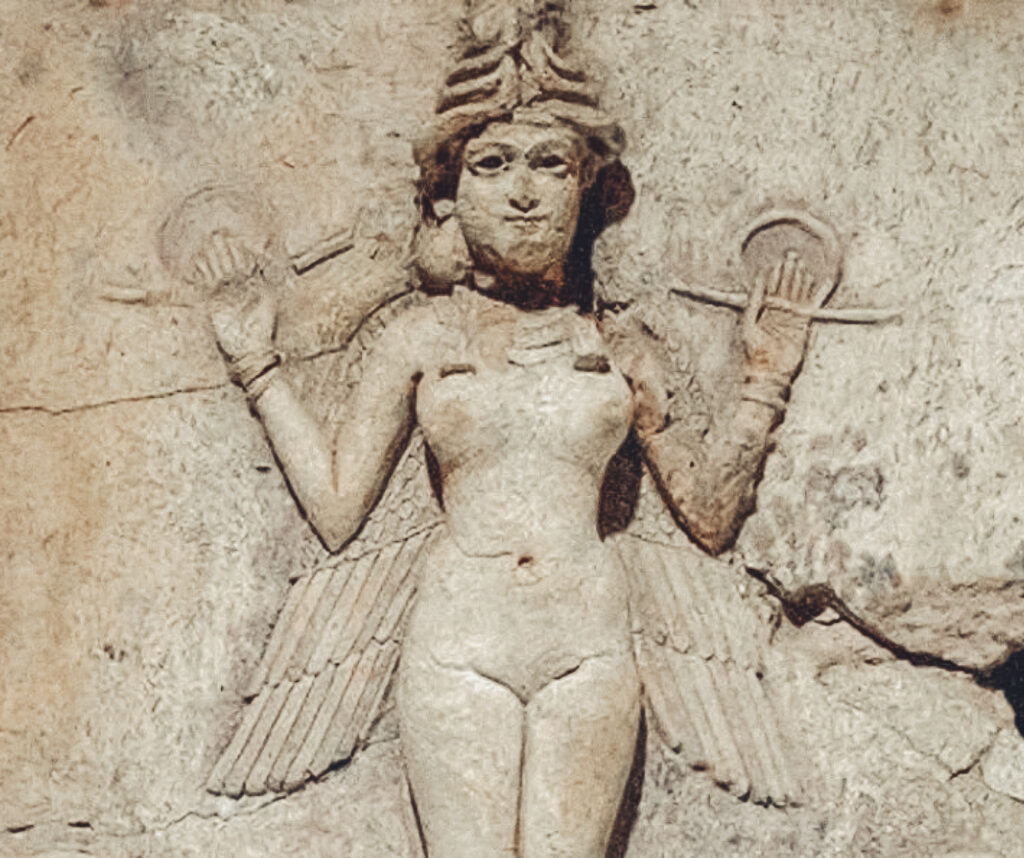
A third possibility is that the figure represents Lilitu, a feared demoness associated with the night and sexuality. The plaque’s emphasis on the figure’s nude form and nocturnal elements aligns with Lilitu’s characteristics in Mesopotamian lore.
Historical Significance and Cultural Context
A Journey Through Time
The “Queen of the Night” plaque’s journey from ancient Mesopotamia to the British Museum is a tale of intrigue in itself. Discovered in southern Iraq and confirmed to be from the Old Babylonian period, the plaque made its way to England by 1924 and has since become a prized artifact.
Challenging Perceptions
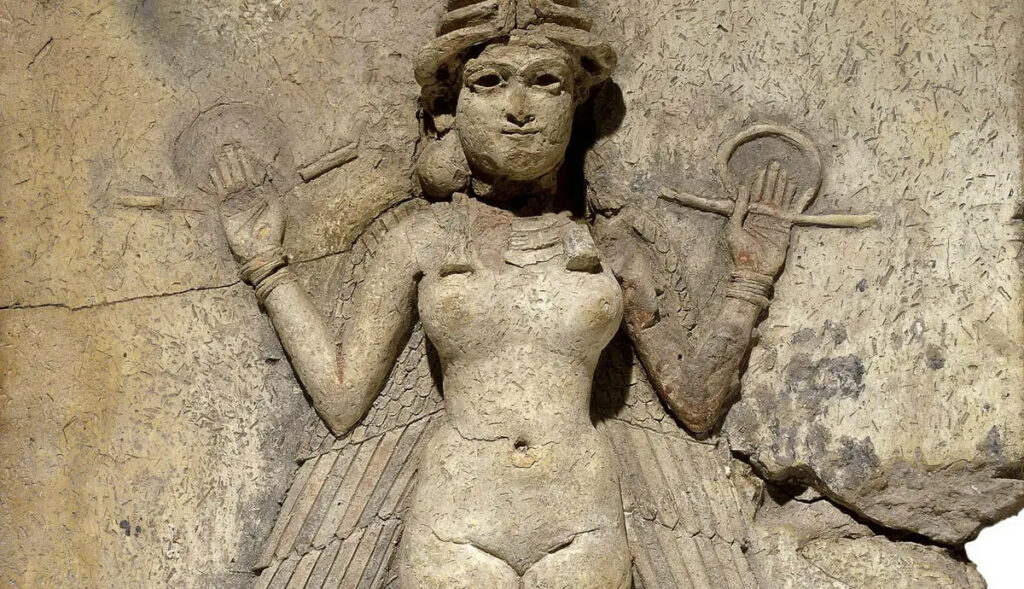
This remarkable artwork not only showcases the artistic prowess of ancient Mesopotamian craftsmen but also challenges our understanding of gender roles in the ancient Near East. The prominence of powerful female deities in Mesopotamian mythology, as exemplified by the “Queen of the Night,” offers a counterpoint to the perception of the region as purely patriarchal.
Conclusion: An Enduring Mystery
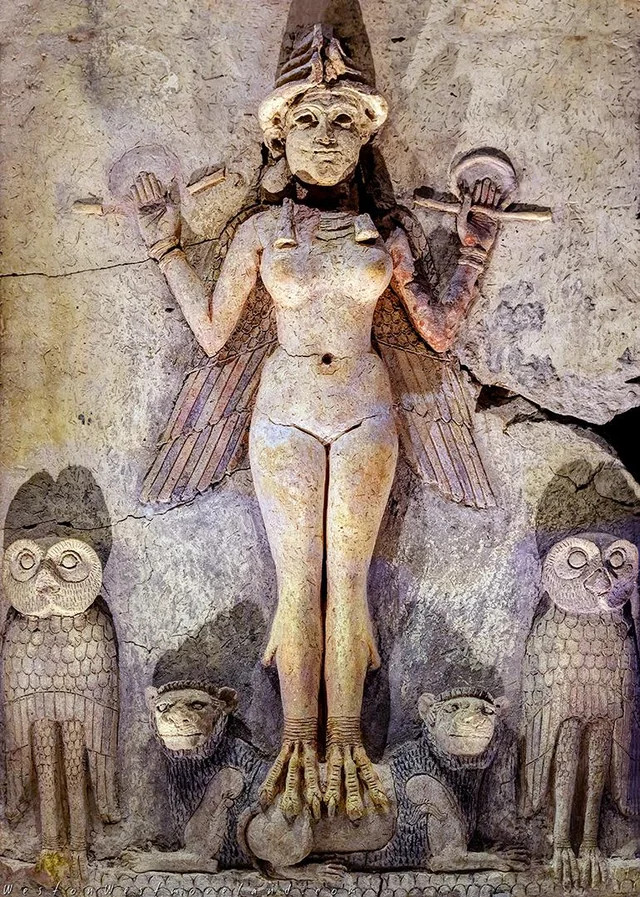
As we conclude our exploration of the “Queen of the Night” plaque, we are left with more questions than answers. This enigmatic artwork continues to captivate and perplex, serving as a testament to the rich cultural legacy of ancient Mesopotamia. Whether she represents Ishtar, Ereshkigal, Lilitu, or another deity altogether, the “Queen of the Night” remains a powerful symbol of the complex and fascinating world of Mesopotamian mythology.

